Want to know how Miso is made? Join us on a tour at Hikari Miso’s Iijima Green Factory located in the picturesque Nagano countryside of Japan.
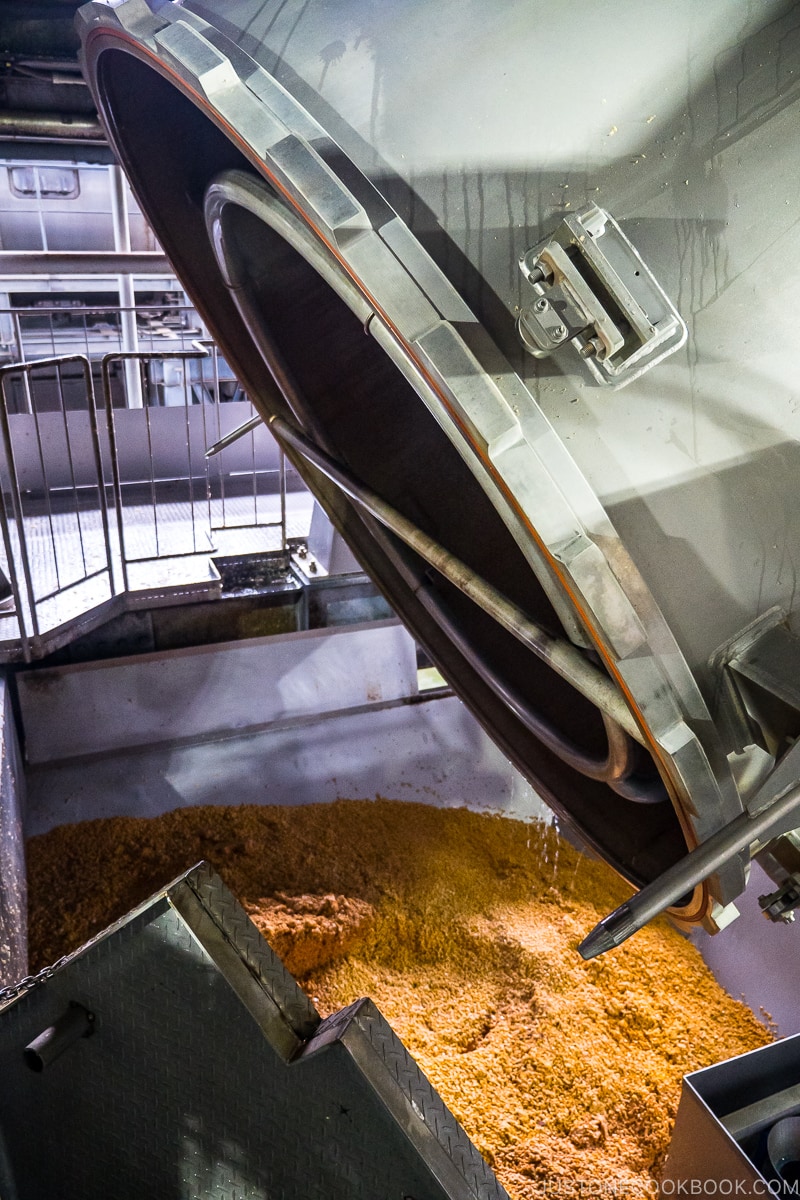
In Japan, many food companies offer tours of their factory. Throughout our travels in Japan, we’ve visited a fishcake factory, Kikkoman’s soy sauce factory, breweries, and shingen mochi factory. We enjoy visiting food factories with our children so they can learn and appreciate the various processes that go into creating the food we eat. When our long time partner Hikari Miso offered us a tour of their miso factory, we jumped on the opportunity to learn more about miso making.
Hikari Miso Iijima Green Factory
Hikari Miso’s Iijima Green Factory is located in the valley of Central Alps in Nagano Prefecture, about a 3 hrs drive from Tokyo. The surrounding of the factory is absolutely beautiful, with views of mountains, green scenery, and rice fields.
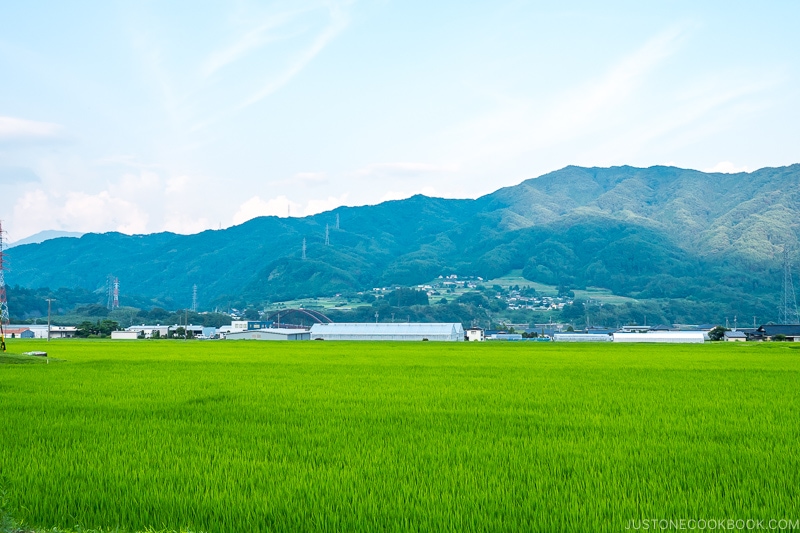
The factory is not open for public tours to visitors so we were excited to have this unique behind the scene opportunity to see how our favorite miso is made.
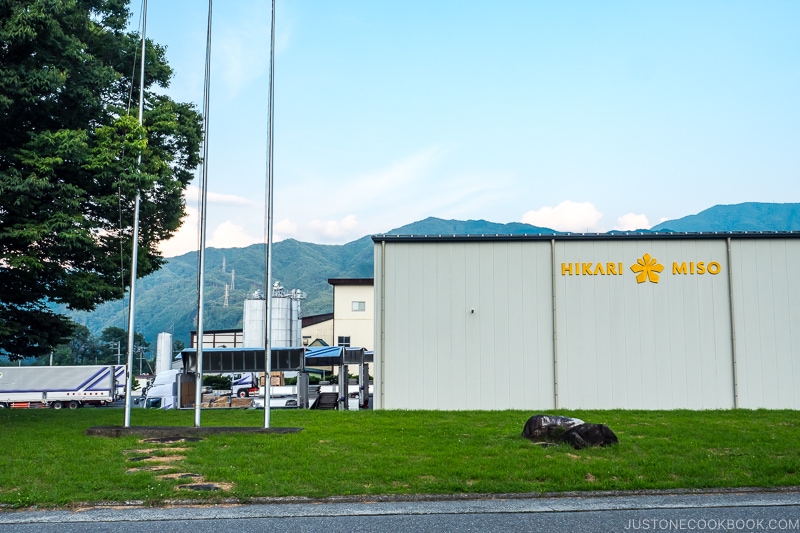
How Miso Is Made
Before we start the tour, let’s quickly go over how is miso made.
Miso is made with just a few ingredients, koji, soybean, salt, and water. Cooked soybean is mixed with rice koji, water, and salt, and then it’s simply fermented and aged. At Hikari Miso’s factory, miso is pretty much processed the same way but on an extremely large scale. They also use different rice, soybeans, and salt to create various flavors and varieties of miso.
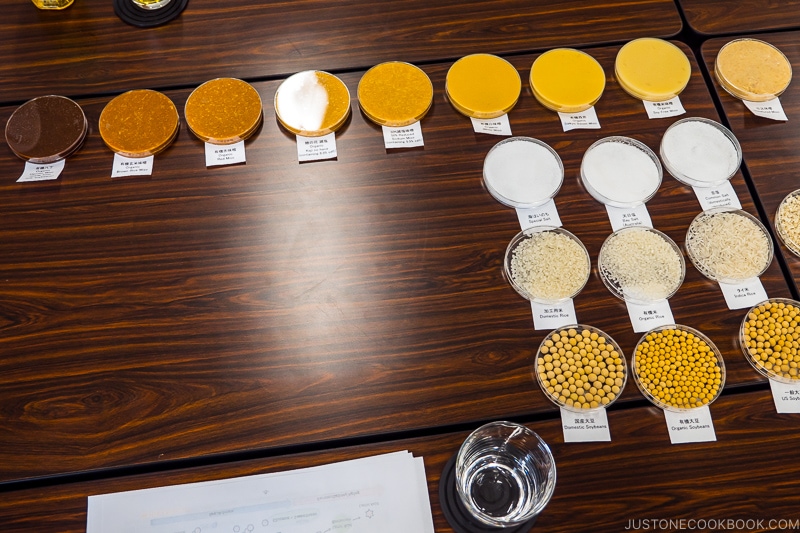
Why Does Miso Taste So Good
Made of just a few ingredients, why does miso taste so good and packed with umami flavors? The secret lies in the fermentation process where the soy protein is broken into peptides, and further into amino acids. The amino acid is where the sweet flavors and umami comes from.
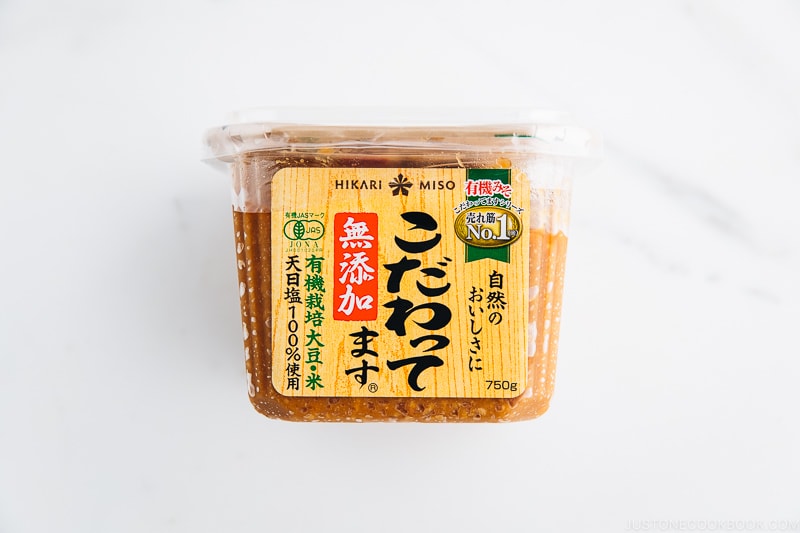
Ready for the tour? Let’s go!
The Ingredients for Miso
After arriving at the factory and meeting the production team leaders, our family was taken on a guided tour of the facilities. To enter the miso-making building, we had to scrub our hands for a specified amount of time and put on a clean suit and hair net so we don’t contaminate any of the food being produced.
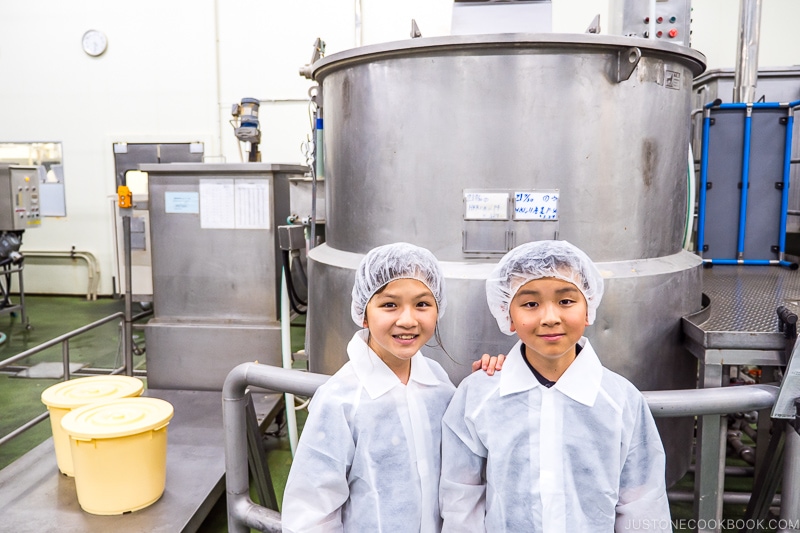
High-Quality Water
The location of the factory is one of the reasons why Hikari Miso tastes so good. Being at the foot of the Central Alps, there is abundant high-quality groundwater from the snowmelt. The water is used to cook soybean, rice, and truly one of the main ingredients in miso.
In 2009, Hikari Miso also started to repurpose the wastewater from miso production. They are able to capture methane gas from the wastewater to generate power.
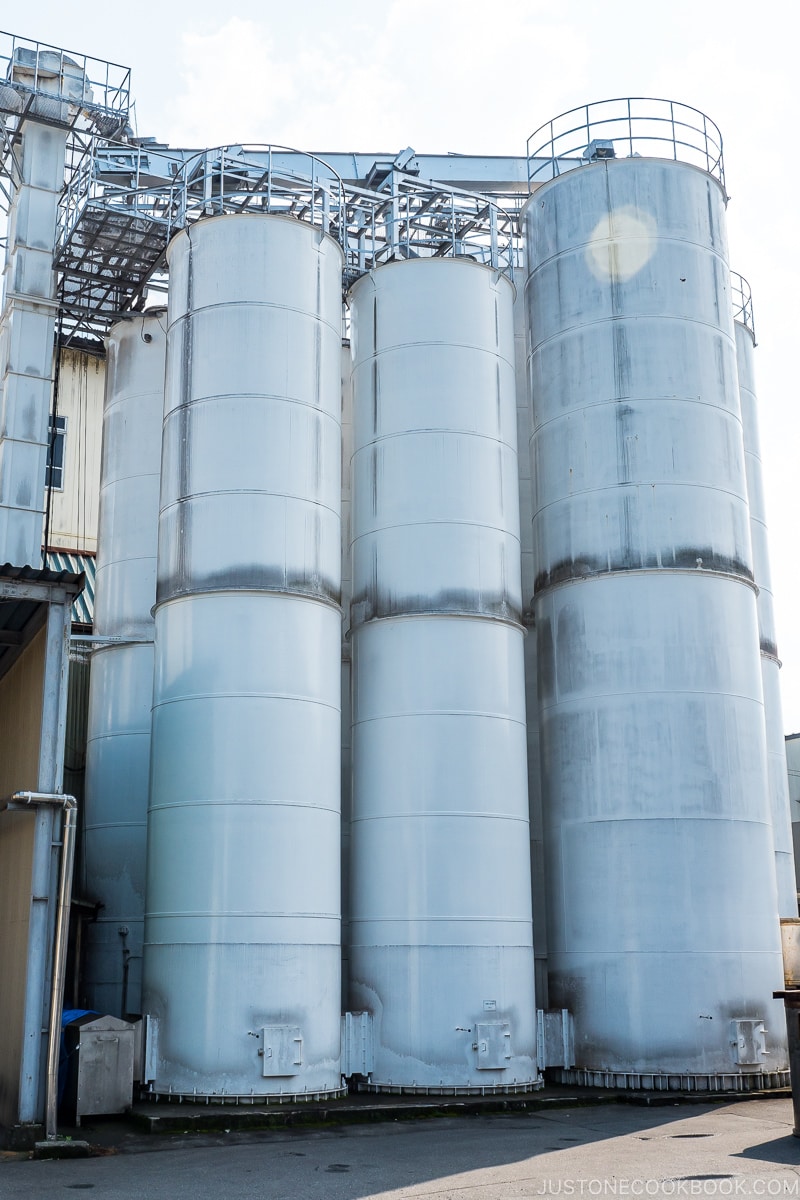
Prepping Soybeans
The miso factory tour focused on the main ingredients of miso, starting with soybeans. We learned how soybeans are stored, such as organic soybeans have to be stored completely in a separate silo by themselves so no cross-contamination happens. We also learned how they’re sorted, peeled, cleaned, and soaked prior to steaming.
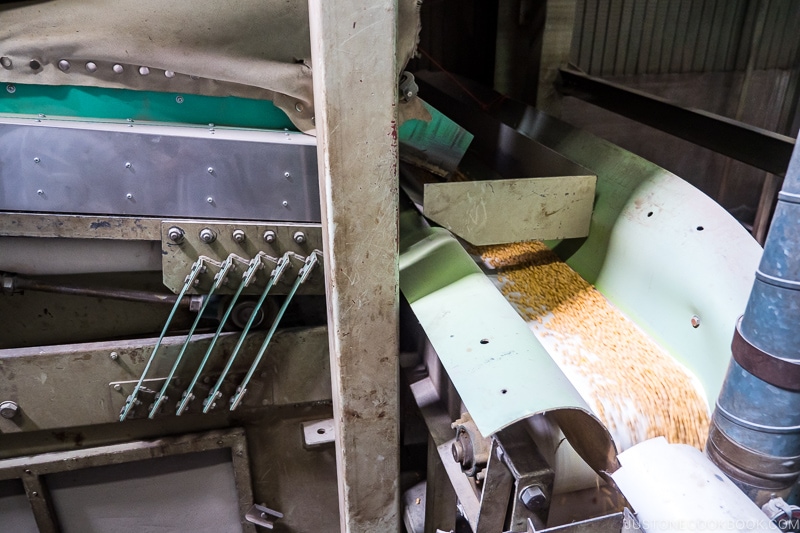
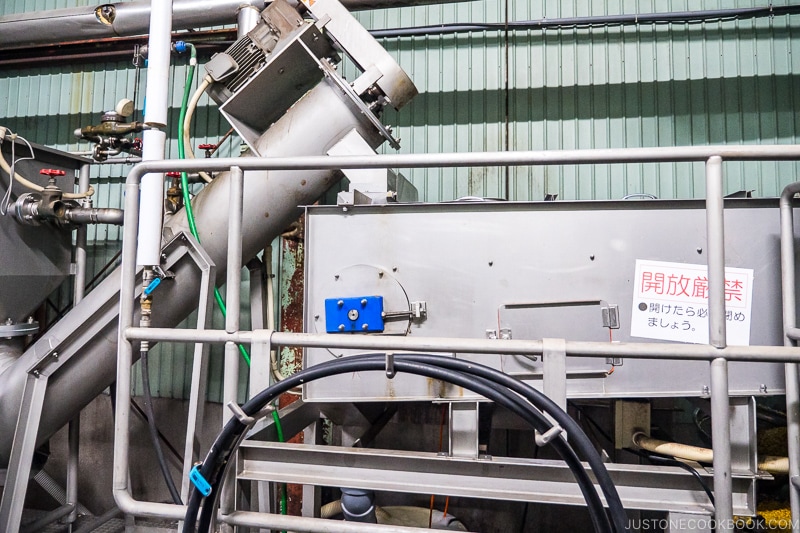
Rice and Salt
The next ingredients we learned about are rice and salt. Everything is on a massive scale. The rice goes through a selection process, then soaking, steaming, and cooling. The cooling step is required before introducing koji-kin. After adding koji-kin to rice, it becomes koji.
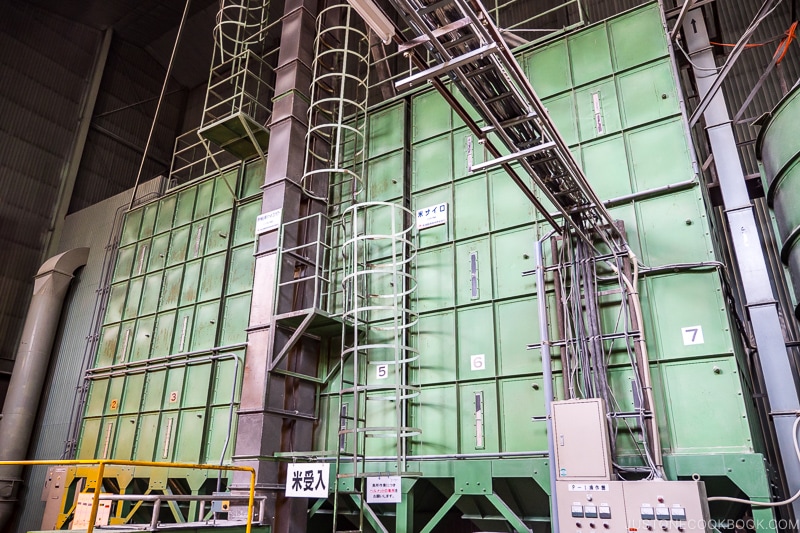
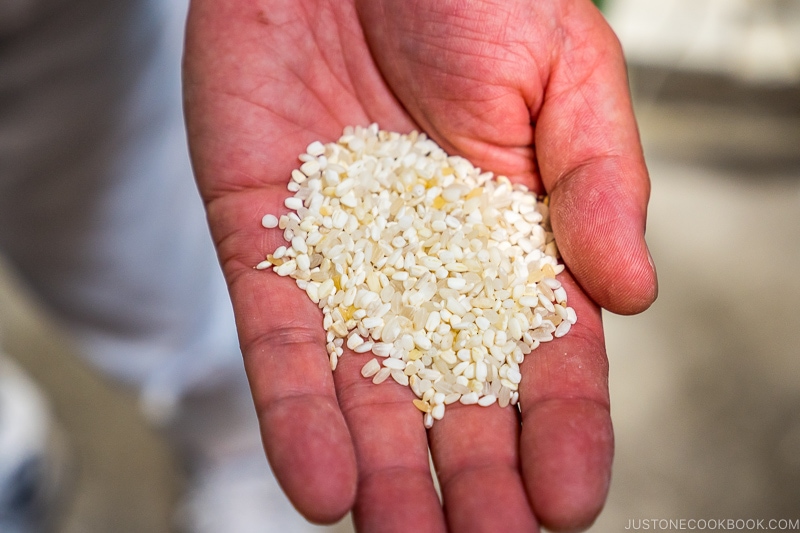
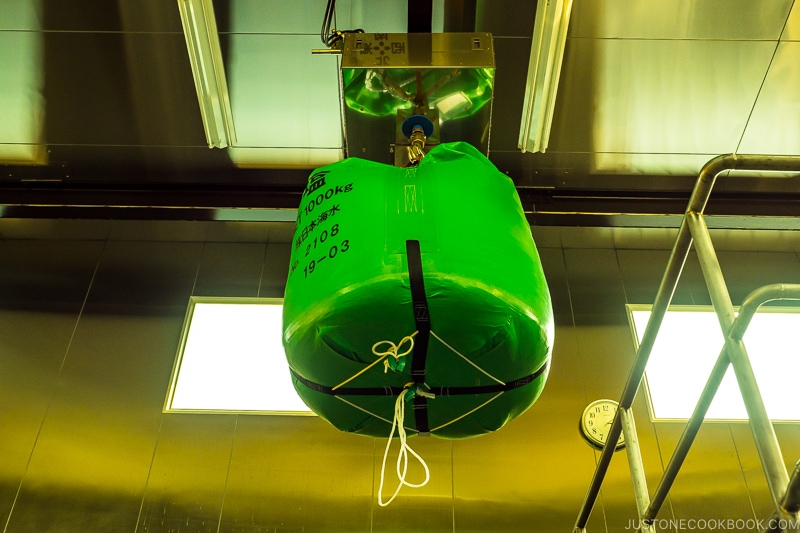
Miso Making Process
After the tour of how ingredients are selected and prepped, we stepped into the hot and humid miso-making building. Since the soybean and rice need to be cooked, it was a very hot environment with steam coming out from various vents.
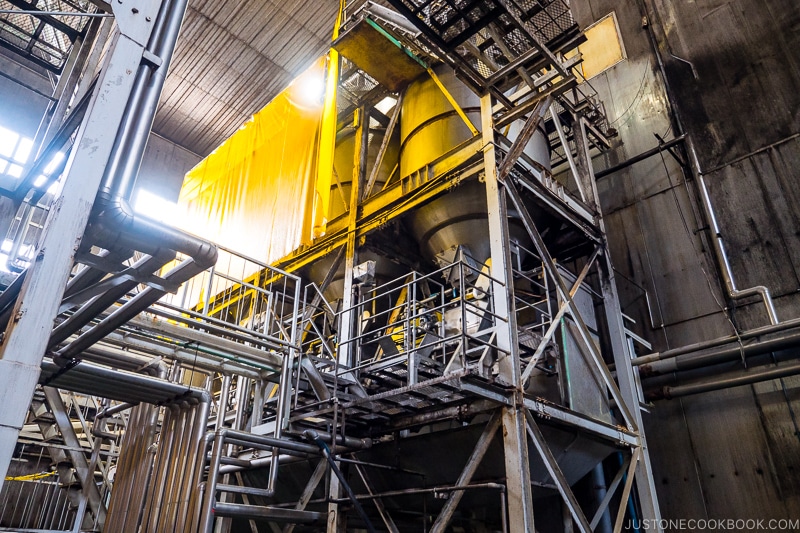
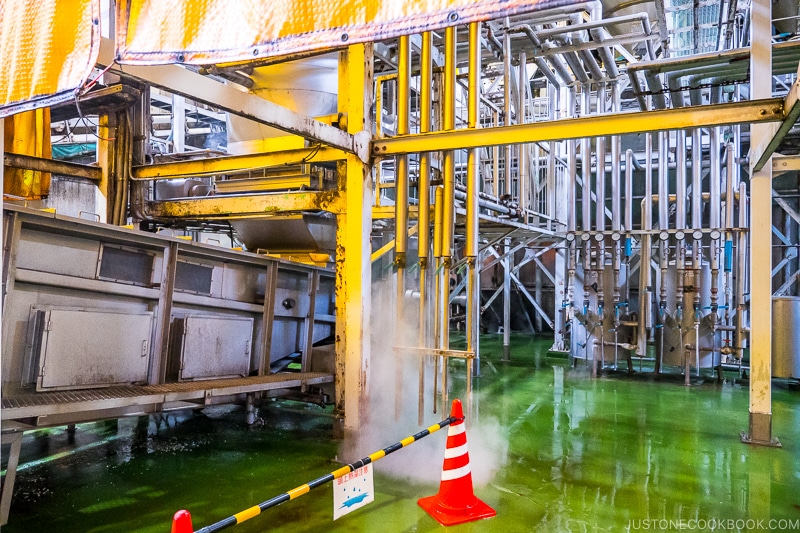
The first stop inside the building is a view of the giant koji cultivating machine. It is one of the largest in Japan (34 tons) and when the door opened to show us the interior , we were blasted by a super-hot air. What an incredible welcome!
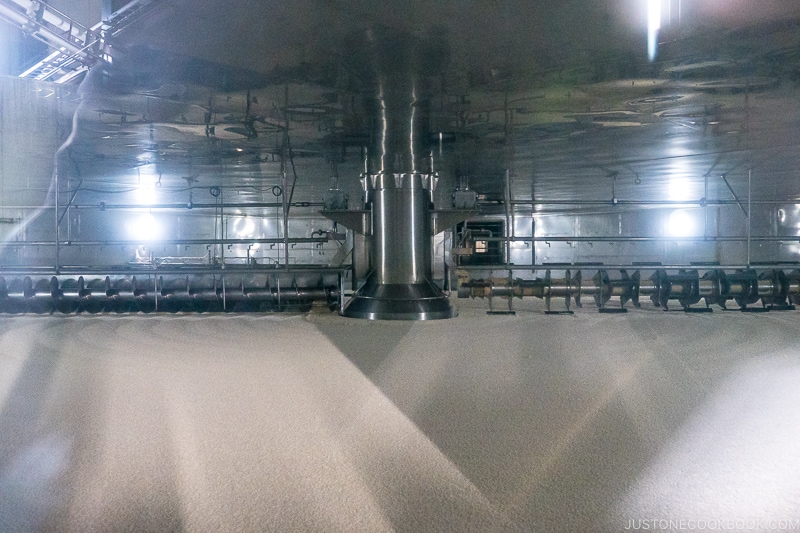
The entire miso making process is automated, from cooking the ingredients to mixing the right amount of ingredients for different types of miso.
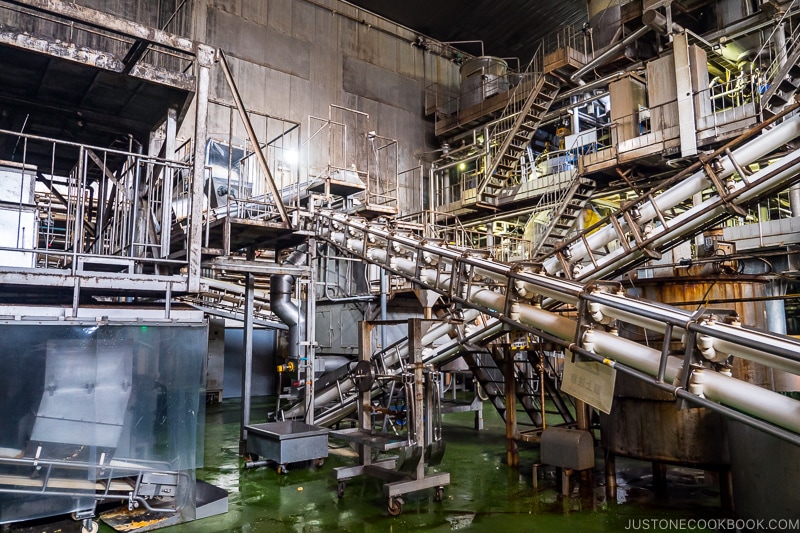
Heading up to the second floor of the building, we could see soybean being cooked.
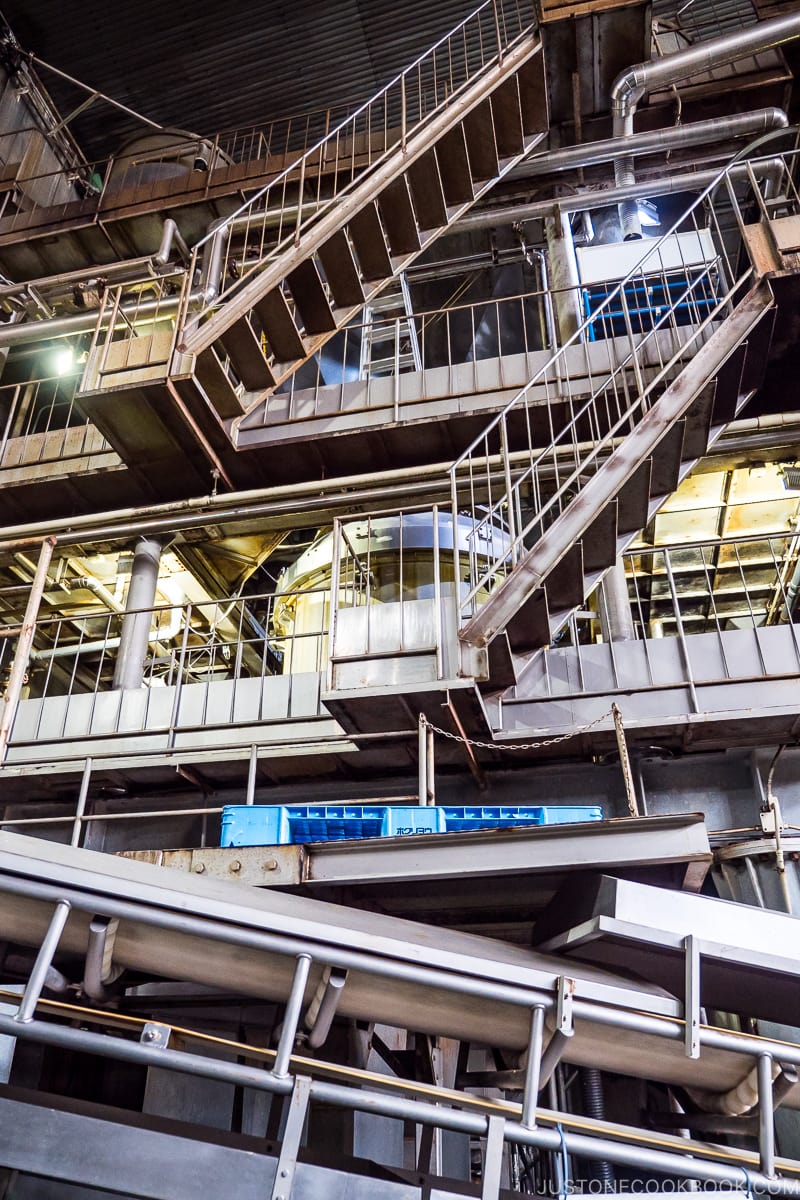

After cooking, soybeans are ground up and extruded.
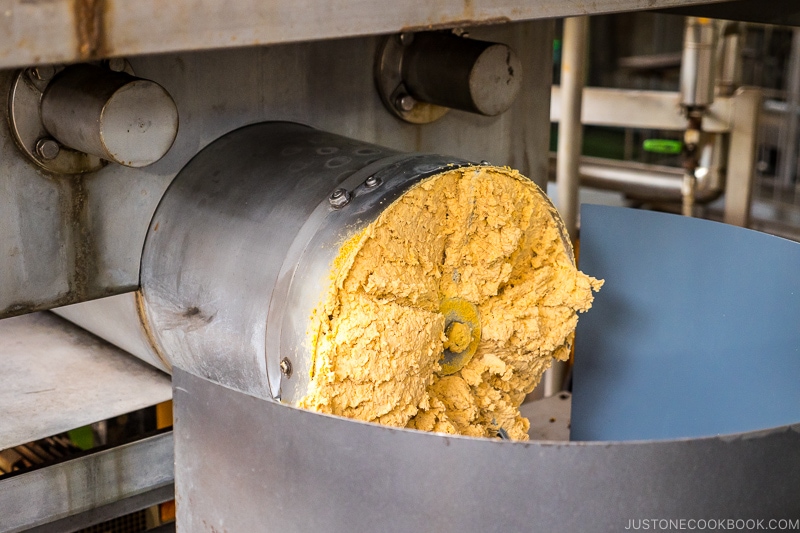
From the other side, cooked rice and koji mixture are piped in to mix with soybean.
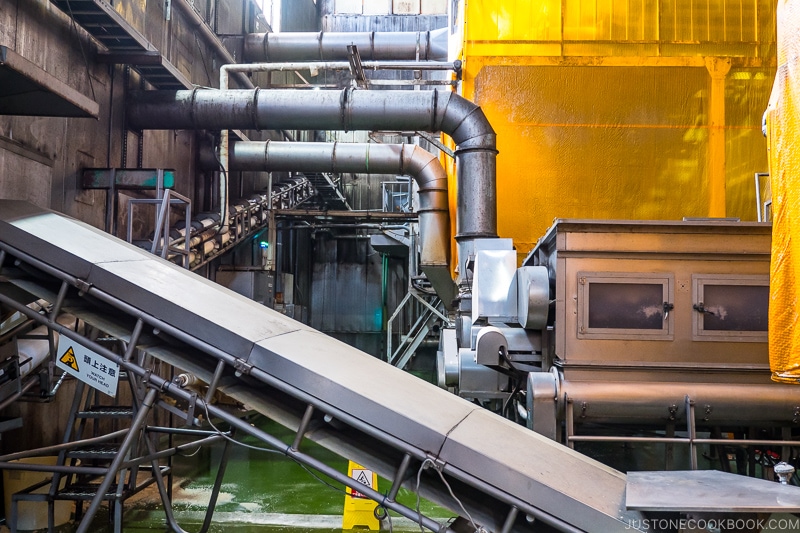
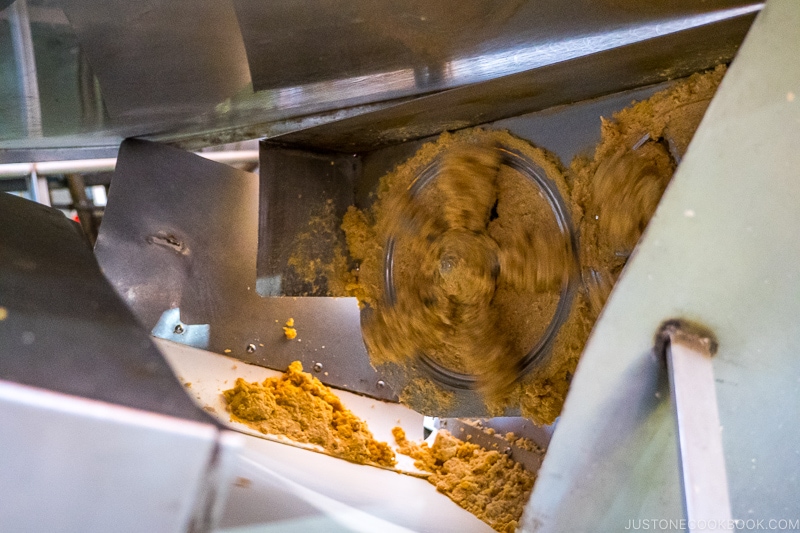
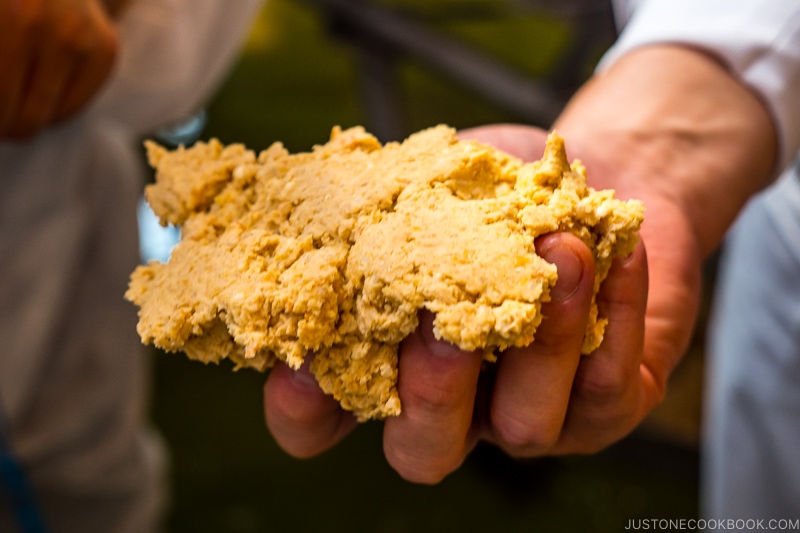
The mixture is then placed into stainless steel storage tanks to ferment.
The Storage Facility
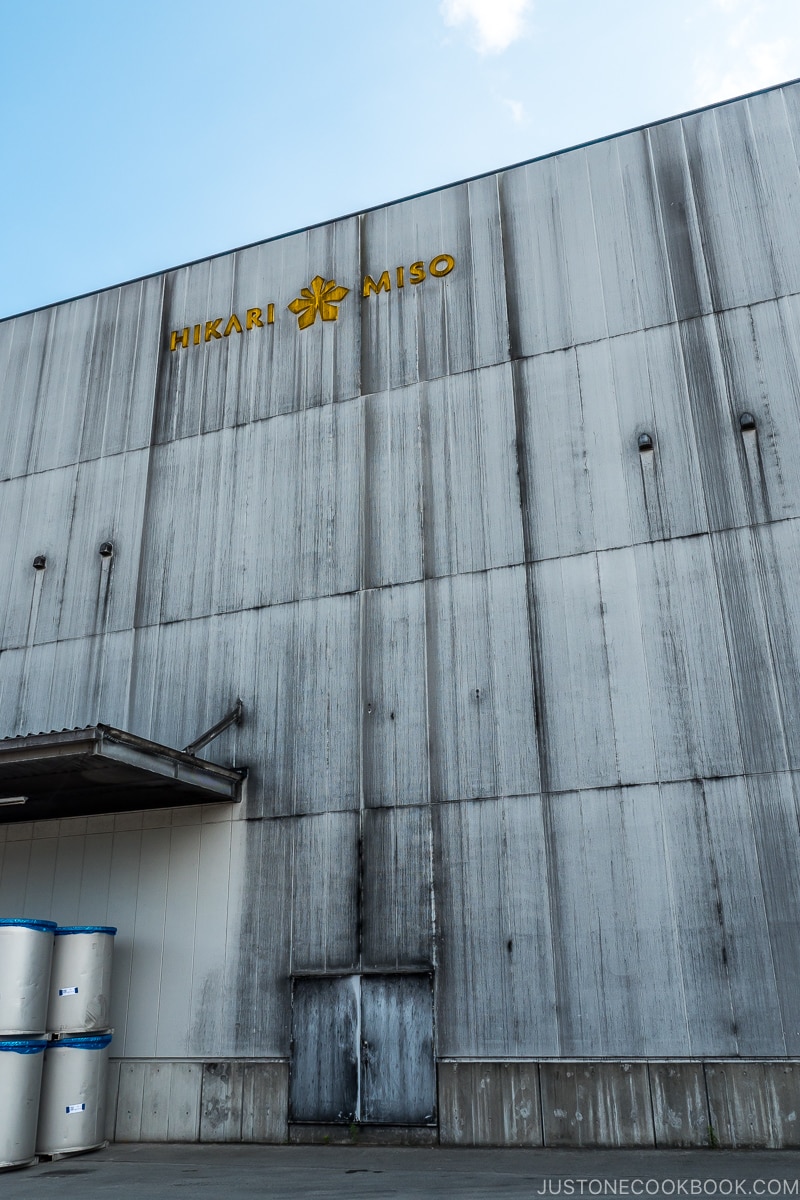
One of the largest buildings on the factory ground is the storage facility. Inside the storage facility, there were endless towers and rows of miso fermenting and aging in stainless steel tanks.
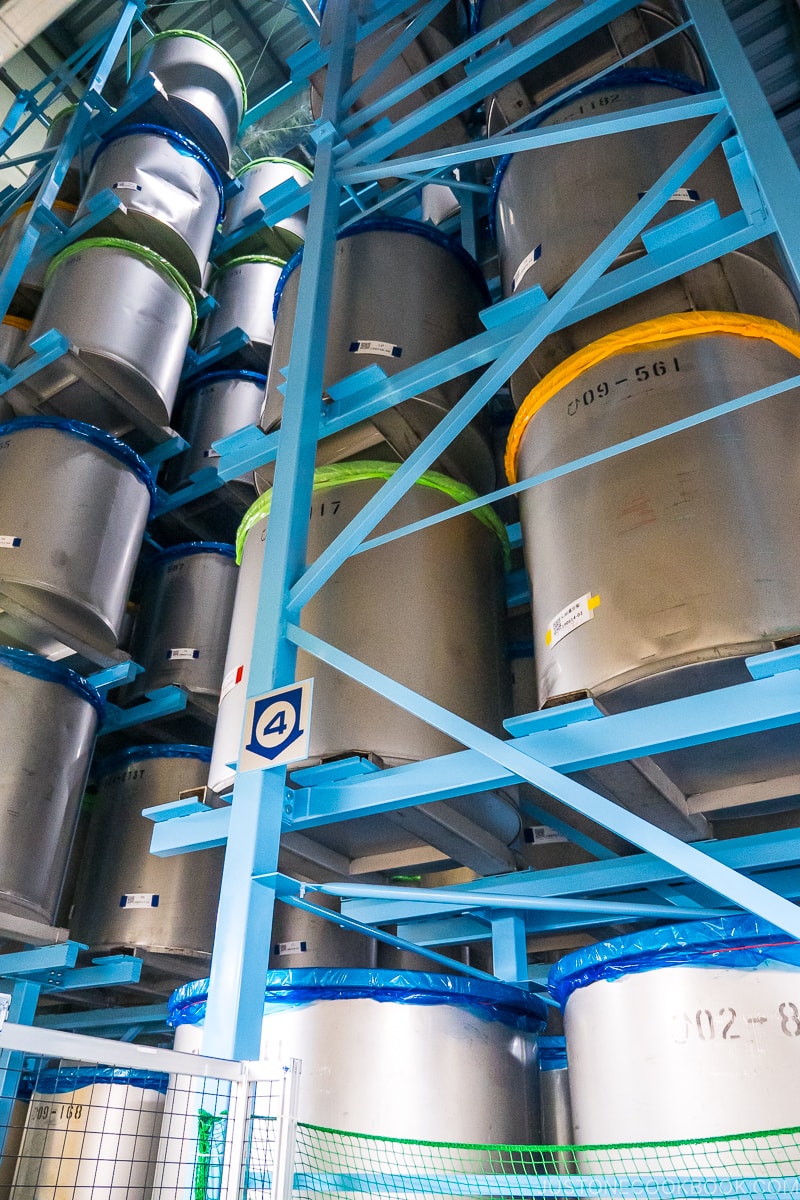
These storage tanks are ginormous. Here is one on a forklift to provide perspective.
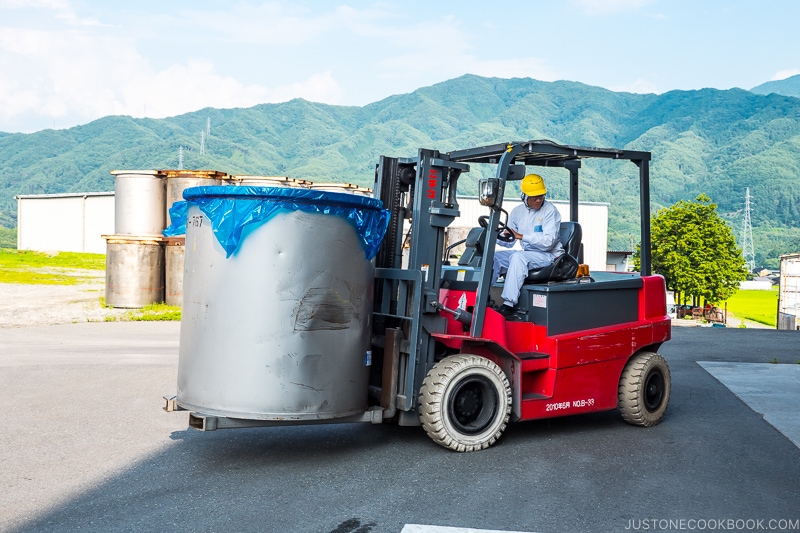
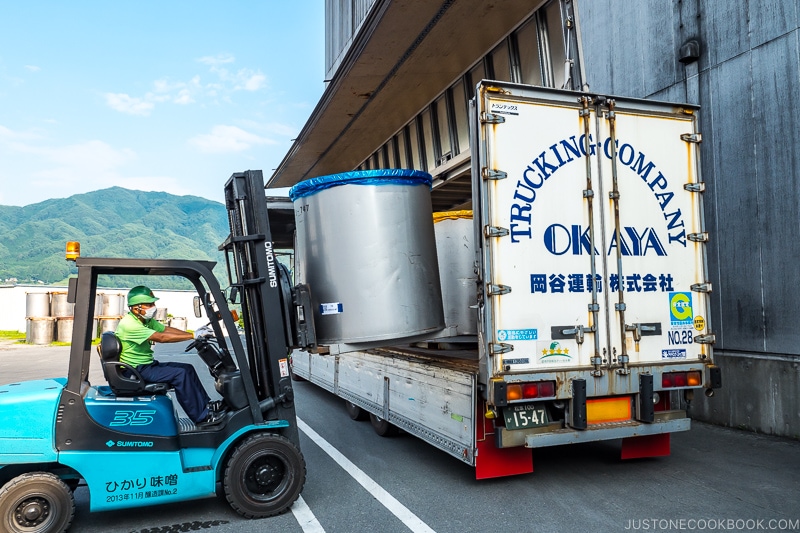
Packing and Production
In the last part of the tour, we saw how miso is transferred from the storage tanks and packed into consumer packages.
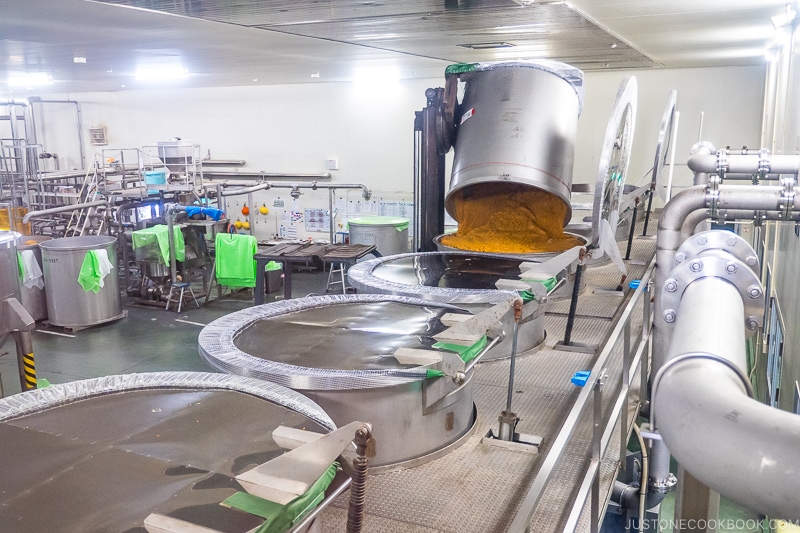
There were production lines for all different types of miso, as well as miso soup and other shelf-stable miso products.
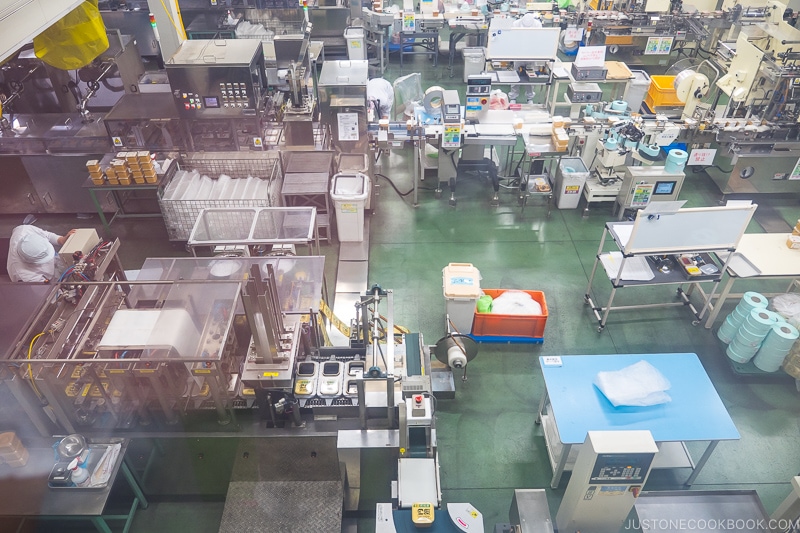
The majority of the packing processes are fully automated.
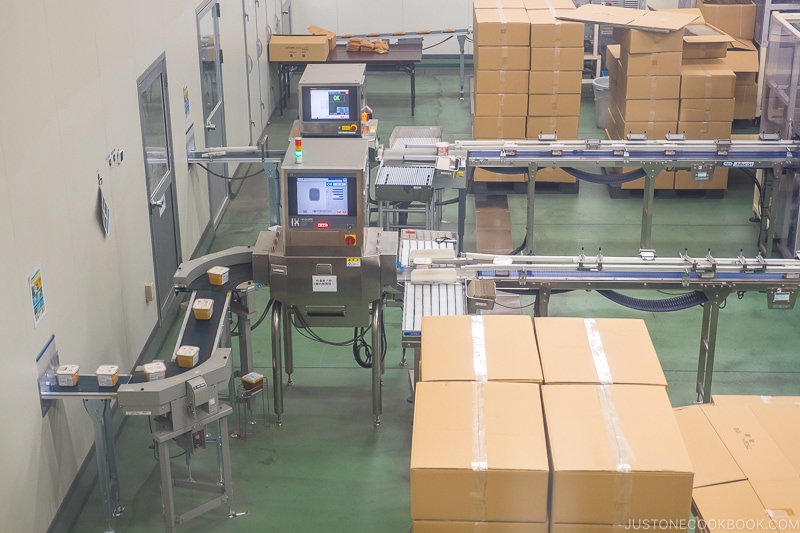
We’re thankful the Hikari Miso team for the wonderful miso factory tour. The team generously spent time with our family and answering all the questions we had about miso making. It was eye-opening for us to see miso being made on such a large scale.
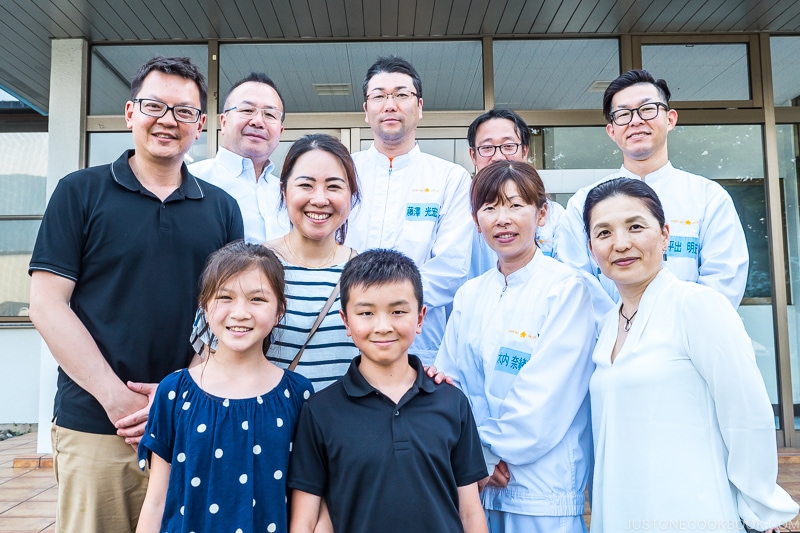
To learn more about miso, check out this post:

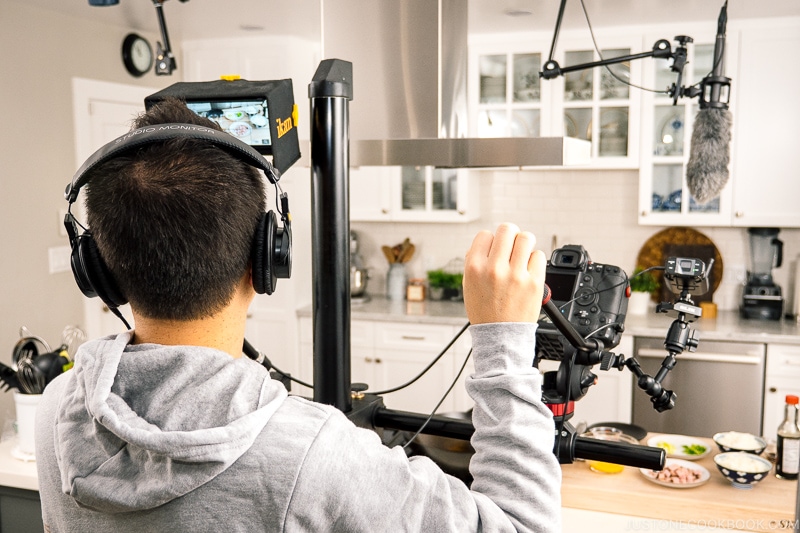









The tour was amazing and to see how automated they have made the process. I was impressed!
HI Nami,
THIS IS A VERY NICE IDEA TO SHOW US THE MISO ABRIC.
I ENJOYED IT.
TAKE CARE.
LOUISE
Hi Nami,
Thank you for sharing your amazing tour! It was very interesting to see how miso is made. My question is a bit different: Have you ever tried your hand at making a homemade miso? I’m making my own natto (thanks to Emmy and Natto Dad) since here in UK it’s both quite expensive and not always available. The process of making miso seems to be pretty straightforward and as long as you sterilise your equipment properly, it shouldn’t really go wrong. The only difficulty would be finding koji-kin / rice koji but checked Amazon and they seem to be available. Does it need to be a specific type of koji? I am also curious if the homemade miso would taste differently?
Hi Aga,
Yes, we have a homemade miso recipe. Here is the link – https://www.justonecookbook.com/how-to-make-miso/
For the recipe, we used Cold Mountain koji which is available in our local Japanese supermarket. The homemade flavor is good but you do end up with quite a bit of it so it takes some time to finish consuming.
Thank you so much! I often use your recipes but never realised you have a miso one too. Will definitely give it a try.
Thank you for the etour of the Miso plant. I have enjoyed Hikari miso fora few years now and it is good to see the effort put in to maintain good quality miso.
Hi Monica,
Thank you for reading the Hikari Miso tour, they are very dedicated to making the best miso!
It seems a very clean and pure process! My question is – do they use MSG in the salt for the miso making process? I’m always concerned about the use (or overuse) of this product in Japanese (and Asian) processed foods. And I struggle to read the labels…
Hi Clare,
Hikari Miso is known for their organic line of miso and they do not contain any MSG. Most fresh miso do not contain MSG but some miso soup packages may.
Hello:
Loved learning about Hikari Miso. The Next time you are in Chiba you should visit my cousin Gen Kaneko and their factory. They do the white radish and produce the shredded white radish that you see at the sushi shops and in displays. It is quite the operation and to see the warehouses full of large daikon is amazing. KYS
Hi Kathleen,
Do let us know your cousin’s information, we would love to see the shredded daikon and Chiba is not too far away from Nami’s home.
I enjoyed this tour of the miso factory. Your posts are informative. Thank you.
Hi Irene,
Thank you for stopping by to read the miso factory tour post! Appreciate your kind feedback.
WOW! That was an amazing tour. It was super interesting to see all the steps it takes to make the miso, but I think my favorite part would’ve been the tasting! Thank you so much for sharing your tour with us!
Hi Annette,
Thank you for reading the miso factory tour post. We were really surprised by the sheer volume of miso they made. The tasting was very interesting too since we don’t normally get to try many miso at the same time.